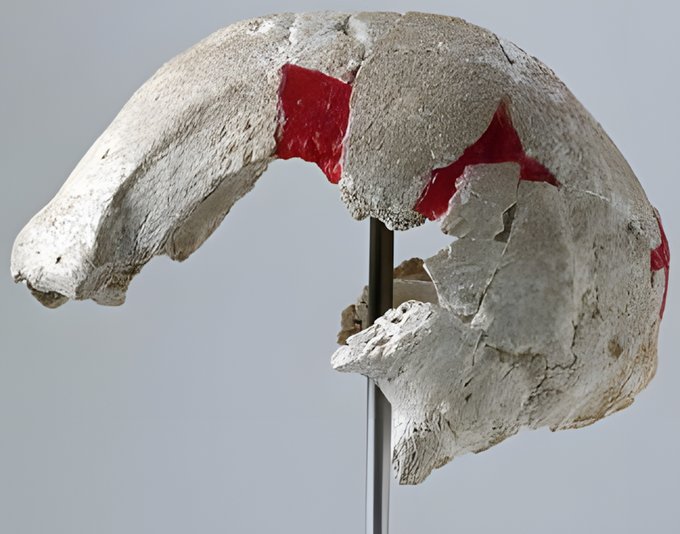The small amount of bone remaining gave an electron spin resonance (ESR) date of 29,000 +/- 5,000 BP, and more recently an OSL dating of 25,000 BP was measured. Some believe that it is more likely to be closer to 35,000 BP at least. There is disagreement about the connections between WLH 1 and WLH 50. Some claim it is simply not possible to have WLH 50 descended from people like WLH 1 because of the extreme difference in proportions as well as the form of the two. The skull bones of WLH 50 is 15-19 mm thick, those of WLH 1 is 2 mm thick.
Chris Stringer of the Natural History Museum in London took detailed measurements of WLH 50 and concluded that when the size was taken into account it was of modern type, but in shape it is closer to the Skhul-Qafzeh crania than to the other Australian samples. It now appears that the individual may have had a genetic blood disorder that in Indonesia, where it is believed the Aboriginal People came from, helps protect against malaria. One feature of the cranial thickening in WLH 50 is that it differs from other modern Aboriginal People, in that whereas it is common for the modern male Aboriginal skulls to have some thickening in parts of the cranial vault, WLH 50 had it over the entire vault. If WLH 50 did in fact have a blood disorder it might mean that he was one of the earliest arrivals from Indonesia as there was no malaria in his new home it would be eliminated from the gene pool over the millennia since his arrival in Australia. As at least some of the oldest dated sites in Australia are of a gracile people, maybe he was among, or descended from, more recent arrivals, that still carried the blood disorder that was lost from the gene pool of people who had been in Australia longer, where there was no endemic malaria.
The confusion over the actual dating of the skull, the silica replacement of the bone indicating a very long burial, while the dating was difficult because of the isolated position of the skull, with no possibility of dating associated material, allows some to hold the view that it may actually be more than 35000 years old.
The calvarium of WLH-50 has been used in a study to test the recent African origin theory, that has been suggested to completely replace the archaic forms, known as Homo erectus, so that H. erectus did not contribute to the ancestry of modern Australasians. They compared data for WLH-50 and 3 potential contributors to the ancestry of WLH-50 (Ngandong, Late Pleistocene Africans, Levant hominids from Skhul and Qafzeh) concluding that the results unambiguously refute the complete replacement of these potential contributors to the ancestry of the Australasians, suggesting that the Ngandong hominids should be reclassified as Home sapiens
Latest
-
Trump did nothing wrong, and is "dog that hasn’t barked" - Virginia Giuffre
-
Rich 'sniper tourists' allegedly paid $90K to shoot civilians -- including kids -- during 'human safari' trips to Sarajevo
-
Thousands of UFOs spotted off US coastlines raise new national security fears: expert | FOX 32 Chicago
-
China tightens export controls on rare-earth metals: Why this matters | Business and Economy News | Al Jazeera

